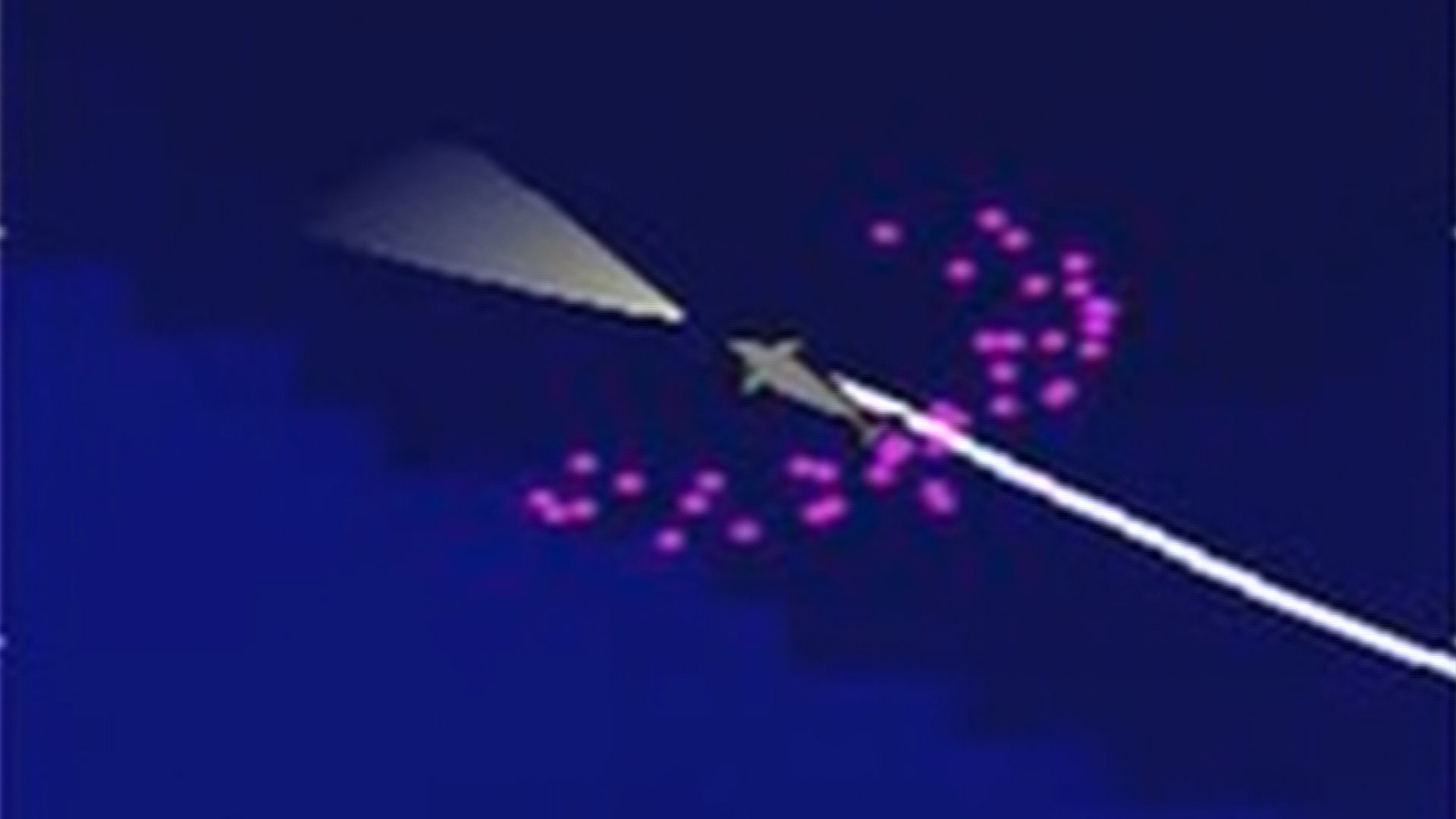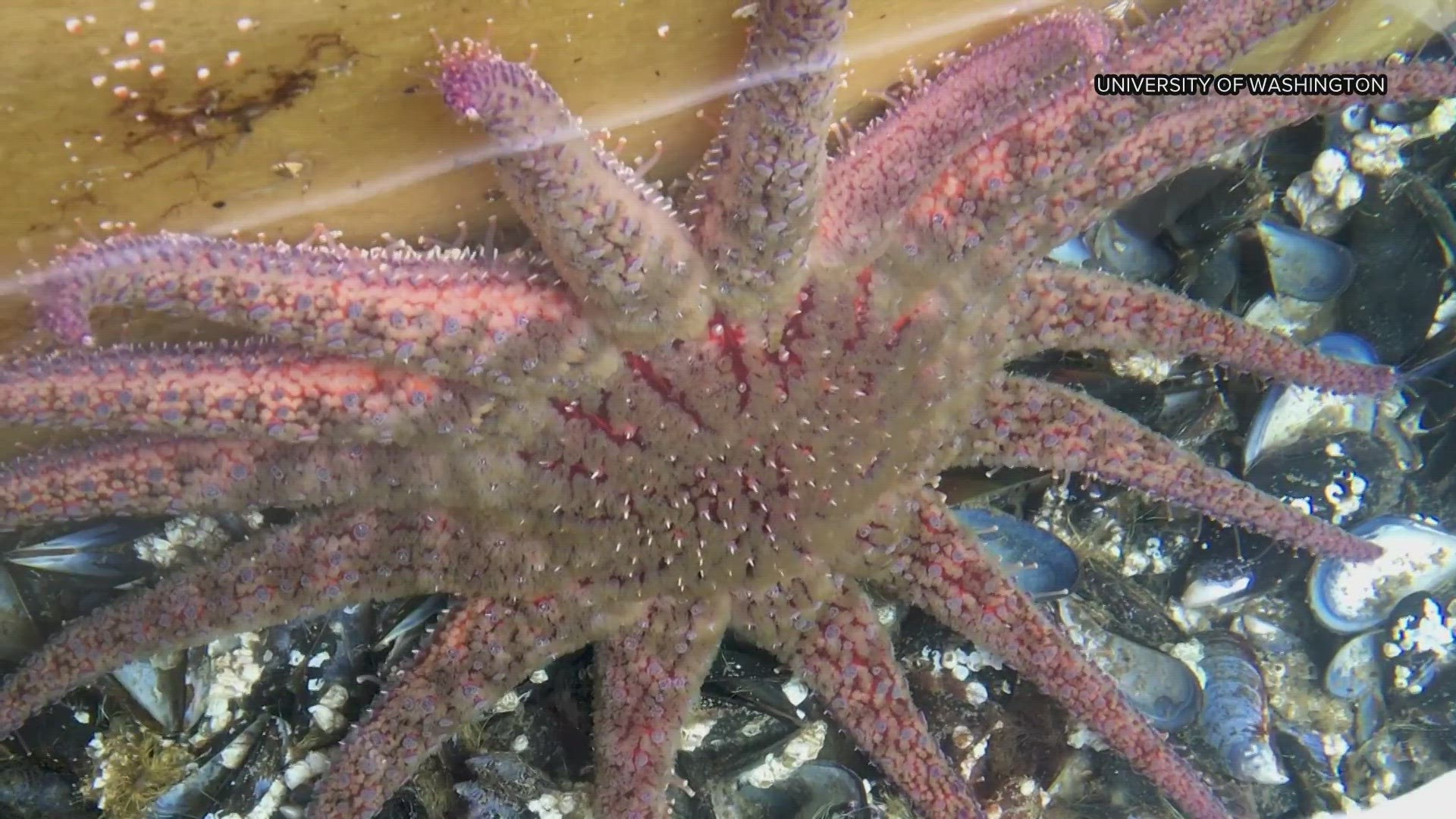If you are reading this on the KING 5 app, click here.
An expert on how boat noise affects whales is showing off his new computer animation in Seattle. It shows what he calls "acoustic hell" for orcas.
Dr. Chris Clark, a bioacoustic engineer at Cornell University, has developed a moving visualization of what he calls noise smog created by whale watching boats in Puget Sound.
In one video, he shows how boat traffic moving through water outside Boston silences whale echolocation. In another video, he shows how whale watching boats near San Juan Island hurt the ability of orcas to receive sound signals needed to find food.
In the video of whales near Boston, the moving blue dots represent whales to show how the whales disappear when the boats, represented by yellow or red dots, pass over.
"When the light of the whale disappears under the acoustic footprint of the ship, that whale has lost all its opportunity to communicate with other whales," Clark said.
In the video showing an orca's path in Friday Harbor, the left graphic shows the whale’s movement relative to San Juan Island. On the right, the top box shows a whale with no boat interference. The bottom animation shows a typical day for an orca with whale watching boats following it around.
"It's really hard to convince people just how much noise these all boats make. Because when you're on the water and you have your binoculars out and your camera going, you're not in the water. But in the water it's hell – acoustic hell," Clark said.
Opponents of the proposed regulation say it punishes a small group of boats without affecting large boat traffic. Clark counters by saying a small whale watching boat can be just as damaging as a larger vessel if its motor's noise is a lower pitched sound.
"What happens is, there's so much noise from all the boats, it makes it less probable you're going to hear that echo. So, you're ability to sense where the salmon are and find a salmon, as good as you are, becomes completely compromised," he said.
Sound travels five times faster in water than air. It's why Clark says whale watchers may not hear much, but the whales are nearly deafened. As salmon numbers plummet, Clark says the noise creates a lethal combination.
"Some of the really big ships have a radius of over 200 miles,” he said. “That's the space over which they can impose this bleaching, this acoustic smog, over the ocean. It's huge."
Clark met with with federal officials from NOAA in Seattle to show them the noise he believes is killing killer whales. He traveled from New York on behalf of a group petitioning for tighter whale watching regulations and a protection zone around San Juan Island.
"Realize this: the phenomenon of ocean noise from humans is a relatively new event," he said. "It's happened in a few generations. So, many of these whales that live to be 50, 60, 70 years old, when they were teenagers, the ocean was quiet. In their lifetime, the urbanization has happened. To think they should find some place else to live, it's like, wait a minute, they were there first. 'This is where we make our living. This is where we hold our family gatherings. Where am I supposed to go?'"
The public comment period ends April 13. File a comment on regulations.gov.


